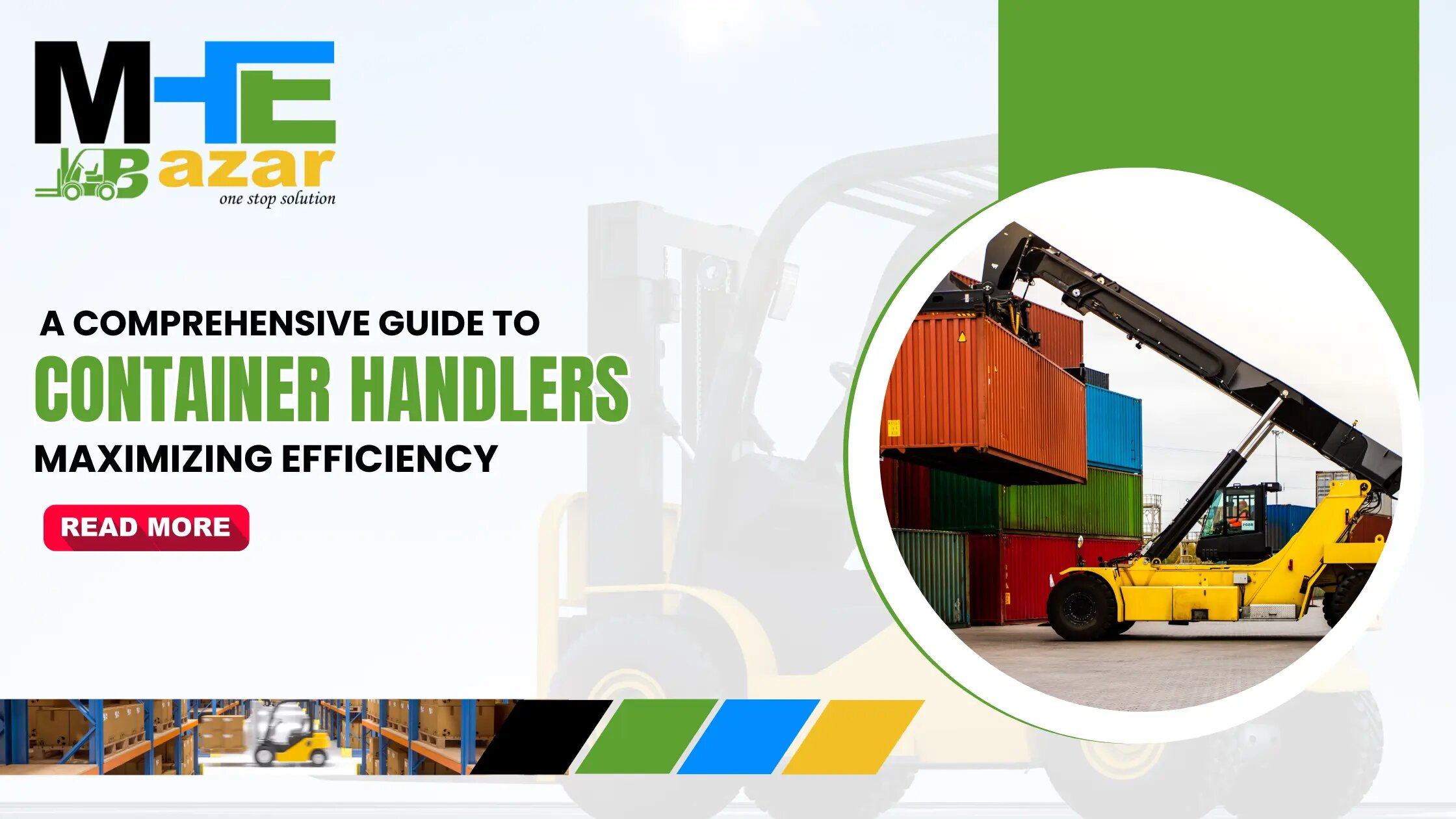
Introduction To Container Handlers
Container handlers are pivotal in modern logistics and supply chain management, playing a crucial role in the efficient movement and storage of goods. These robust machines come in various forms, including reach stackers, forklifts, and straddle carriers, each designed to handle different types of containers with precision and care. The growing demand for rapid cargo turnover at ports and distribution centers has made container handlers indispensable.
Understanding the nuances of container handlers can significantly impact operational efficiency. They are engineered to lift, transport, stack, and unstack heavy containers seamlessly within confined spaces. Advanced models incorporate cutting-edge technology such as GPS tracking, automated systems, and real-time data analytics to enhance performance and safety.
The integration of container handlers into logistics operations not only streamlines workflows but also reduces labor costs and minimizes the risk of damage to goods. Their ability to handle large volumes of cargo swiftly ensures that shipping schedules are met without delays. By optimizing space utilization through precise stacking capabilities, these machines also contribute to more organized storage facilities.
Types Of Container Handlers And Their Uses
Container handlers are essential equipment in modern logistics and port operations, designed to enhance the efficiency of handling, transporting, and stacking shipping containers. There are several types of container handling, each tailored to specific operational needs and environments.
Reach stackers are among the most versatile and widely used container handlers. They can lift containers over short distances quickly and stack them up to five high, making them ideal for small to medium-sized terminals where space is at a premium. Their ability to handle varying container sizes with ease further enhances their utility.
Straddle carriers provide another efficient solution for container movement. Capable of lifting containers from the ground and transporting them across terminal yards without requiring additional transport vehicles, straddle carriers offer significant flexibility. They excel in large port environments where high throughput is necessary.
For more specialized tasks, empty container handlers come into play. These machines are specifically designed for moving empty containers around storage areas or preparing them for loading onto trucks or ships. Their lightweight design allows for faster speeds and improved maneuverability compared to their loaded counterparts.
Key Features And Technologies In Modern Container Handlers
Modern container handlers have evolved significantly, incorporating advanced features and technologies to maximize operational efficiency. One of the standout innovations is the integration of telematics systems, which provide real-time data analytics on equipment performance, fuel consumption, and maintenance needs. This allows operators to make informed decisions and schedule preventive maintenance, thereby reducing downtime.
Automation plays a crucial role in modern container handlers as well. Automated guided vehicles (AGVs) and remote-controlled cranes can streamline operations by minimizing human error and increasing precision in container stacking and retrieval. Additionally, advancements in sensor technology enhance safety features, such as collision detection systems that alert operators to potential hazards.
The use of electric and hybrid powertrains is another significant technological leap. These environmentally friendly options not only reduce carbon emissions but also offer cost savings on fuel over time. Moreover, regenerative braking systems capture energy during braking phases, further enhancing energy efficiency.
Best Practices For Operating Container Handlers Safely
Ensuring safety while operating container handlers is paramount for maximizing efficiency and maintaining a secure work environment. One of the fundamental practices involves thorough training and certification for all operators. Properly trained personnel are well-versed in the complexities of handling equipment, significantly reducing the risk of accidents. Regularly scheduled maintenance checks are equally crucial; these inspections should cover all mechanical parts, hydraulic systems, and electronic controls to ensure that they function optimally.
Communication plays a vital role in safe operations. Operators must maintain constant communication with ground staff to coordinate movements accurately. Utilizing hand signals or radio communication can prevent misunderstandings that might lead to mishaps. Additionally, implementing clear signage around work zones can guide operators and other workers, helping them navigate safely.
Another critical aspect is adhering to load limits specified by the manufacturer. Overloading can compromise the structural integrity of the container handler, leading to potential failures or tipping incidents. Operators should also be vigilant about environmental conditions such as wind speed and visibility; adverse weather can drastically affect handling performance.
Maintenance Strategies To Ensure Longevity And Efficiency
To maximize the efficiency and extend the lifespan of container handlers, a proactive maintenance strategy is essential. Regular inspection routines are pivotal in identifying early signs of wear and tear, ensuring that minor issues do not escalate into significant problems that could disrupt operations. This involves scheduled checks on critical components such as hydraulic systems, engines, brakes, and tires. Utilizing diagnostic tools can provide real-time data on the machine’s performance, allowing for timely interventions.
Equally important is adhering to a rigorous lubrication schedule for moving parts. Proper lubrication reduces friction and wear, enhancing the smooth operation of mechanical components. It’s also crucial to replace filters and fluids at recommended intervals to maintain optimal engine performance and prevent contamination-related failures.
Training operators in best practices not only enhances operational safety but also helps in recognizing potential issues before they become severe. Operators should be educated about the importance of reporting unusual sounds or behaviors in machinery immediately.
Training And Certification For Container Handler Operators
Training and certification for container handler operators are pivotal in ensuring the efficient, safe, and smooth operation of port terminals and logistics hubs. Comprehensive training programs are designed to equip operators with the necessary skills to handle sophisticated machinery, such as reach stackers, forklifts, and straddle carriers. These programs typically encompass both theoretical knowledge and practical hands-on experience.
Theoretical training covers essential topics like safety protocols, operational procedures, equipment maintenance, and emergency response strategies. Operators learn about load dynamics, weight distribution, and the principles of safe lifting to prevent accidents that could lead to costly downtime or injuries. Additionally, understanding regulatory requirements and industry standards is crucial for maintaining compliance with local and international laws.
Practical training allows operators to familiarize themselves with the actual equipment they will use on the job. Under expert supervision, trainees practice maneuvering containers in various scenarios that simulate real-world conditions. This hands-on approach helps develop muscle memory and confidence in handling complex tasks.
Future Trends In Container Handling Technology
As the global supply chain evolves, the future of container handling technology is poised to undergo significant transformations driven by advancements in automation, artificial intelligence (AI), and sustainability. One of the most promising trends is the integration of AI and machine learning algorithms to optimize operations. These technologies enable predictive maintenance, reducing downtime and enhancing equipment longevity. Intelligent systems can also analyze vast amounts of data to streamline workflow processes, anticipate demand fluctuations, and allocate resources more efficiently.
Automation will continue to play a crucial role in container handling. Autonomous vehicles (AVs) and robotic arms are being developed to handle containers with minimal human intervention. These innovations promise not only to increase efficiency but also improve safety by reducing the risk of human error.
Sustainability is another key focus area for future container handling technology. The industry is seeing a shift towards electric-powered equipment as companies aim to reduce their carbon footprint. Innovations in battery technology and renewable energy sources are making it feasible for ports and terminals to transition from diesel-powered machinery to greener alternatives.



